Protecting your head is vital in the rough-and-tumble world of mountain biking, where crashes can be an all-too-frequent occurrence. That’s why getting the best mountain bike helmet possible is hugely important to staying safe and comfortable.
We’ve rounded up our pick of the best trail helmets currently on sale, plus our advice on what to look for when you’re buying a new lid.
We also have a list of the best enduro helmets if you're looking for full-face mountain bike helmets, and another looking at the best road helmets if you ride on tarmac.
Best mountain bike helmets 2024, as rated by our expert testers
Bell 4Forty MIPS
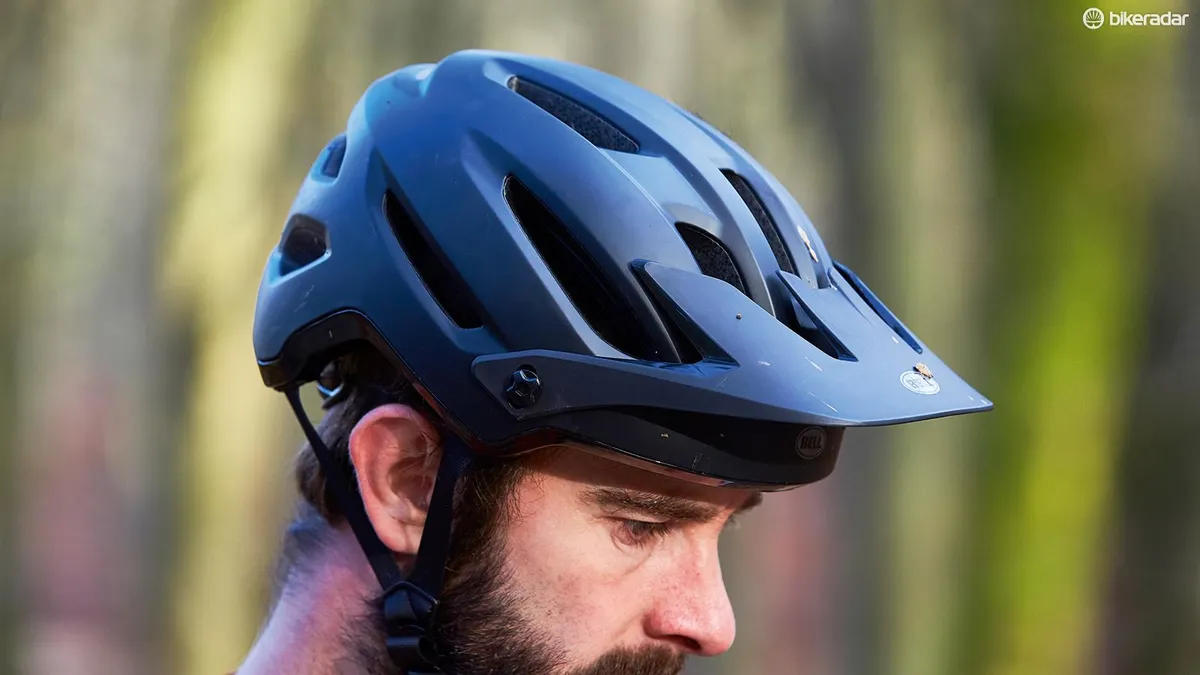
- £90 / $110 / AU$180 as tested
- Pros: Comfortable to wear; fit system is easy to adjust; great airflow; top-value
- Cons: Could do with indexed visor adjustment
Stacked with features, the 4Forty is pretty affordable. The large vents mean it has impressive airflow over the top of the head to help reduce heat build-up on long climbs.
We found its shape is well-suited to those with rounder heads and the fit system is easy to adjust with an indexed dial on the back of the lid.
The peak adjusts high enough for goggle parking, too.
Fox Speedframe Pro
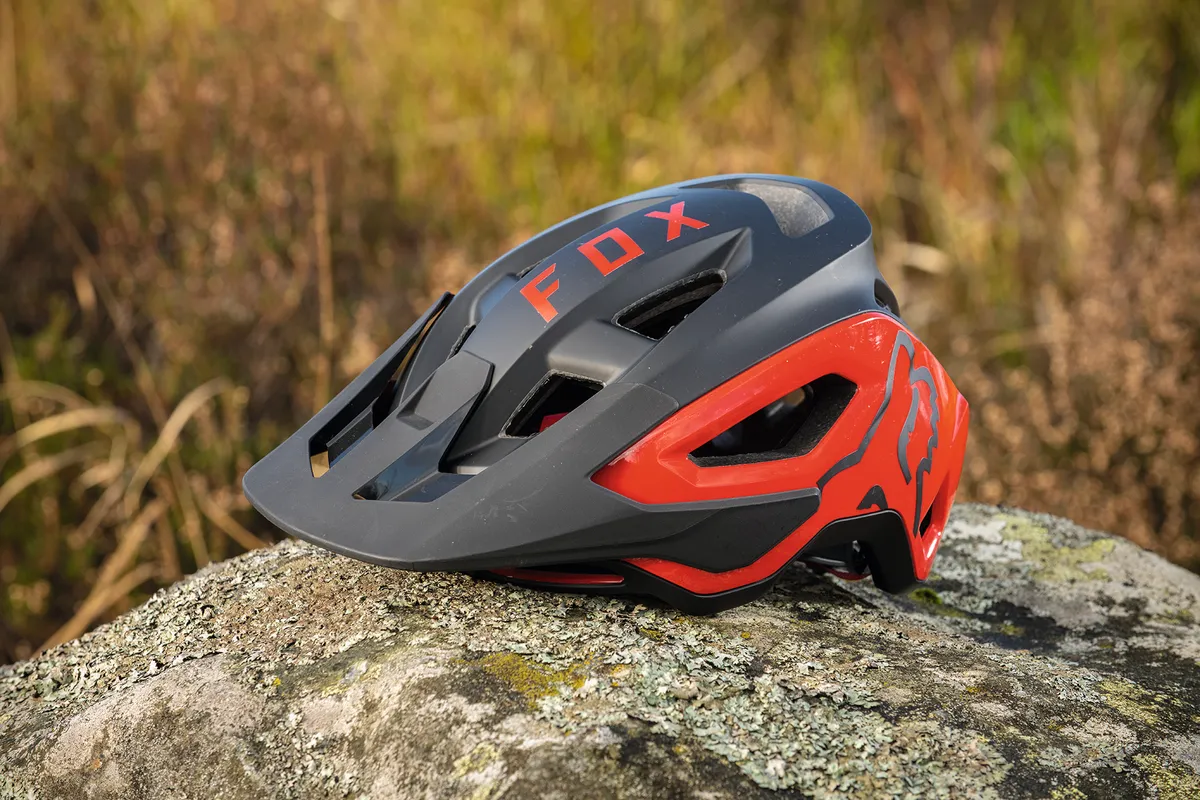
- £149.99 / $169.95 / €159.99 / AU$199.99
- Sharp looks
- Pros: Comfortable and ventilated; MIPS-equipped
- Cons: Not compatible with medium- and large-sized goggles
The Fox Speedframe Pro is a comfy and airy helmet that was near-perfect in our testing and received full marks from independent safety assessors.
The adjustable peak wards off the sun and should fit most types of goggles (on or off the face) without causing them to steam up.
Both straps and buckles are easy to tighten and undo one-handed. The sole issue is the lack of a crash-replacement policy.
Giro Manifest Spherical

- £250 / $260 / €260 / AU$419 as tested
- Pros: Well vented; comfy; lots of features
- Cons: Pricey
The Giro Manifest Spherical is noticeably more breezy than other trail helmets, even at lower speeds, thanks to its highly ventilated design.
There's a decent amount of coverage, and despite this, it's still impressively light.
The tension around the head feels nice and we suffered zero hotspots during testing. The padding is thick enough to keep things comfortable and absorbs enough sweat to avoid any dripping.
There's no getting away from the price and, while the safety features are great, they are the same as the less expensive Giro Tyrant. However, because of how well it performs, it has become a go-to for our tester.
Giro Tyrant
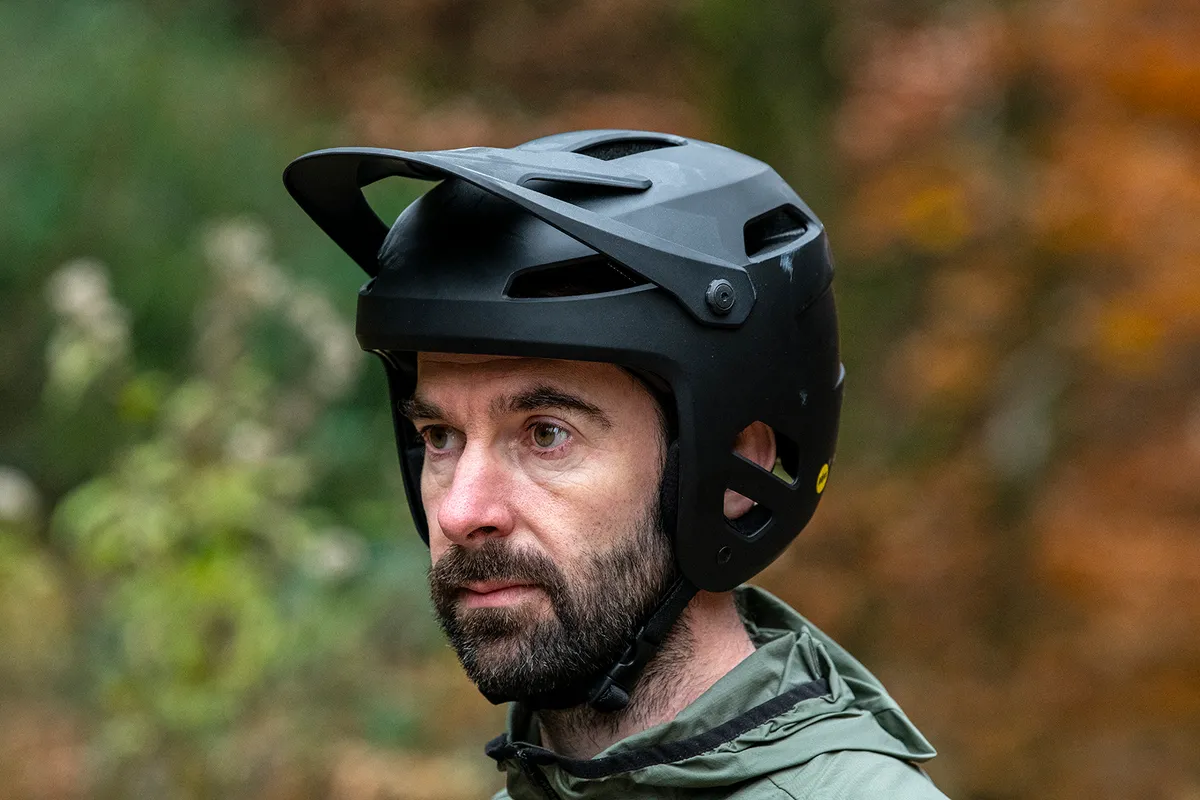
- £135 / $170 / €150 / AU$299 as tested
- Pros: Comfy and well-ventilated; loads of coverage, similar to a lot of convertible helmets
- Cons: Looks might not be to everyone's tastes
The Tyrant helmet from Giro represents a new-school attitude to trail riding, where more protection is a must-have at the expense of a little weight and heat dissipation.
It uses a MIPS Spherical system to help protect your brain in a crash and offers lots of low-down protection at the rear thanks to its design.
It can get a bit hot on prolonged, slow climbs, but we think it's a price worth paying for the extra coverage on offer.
Lazer Chiru MIPS
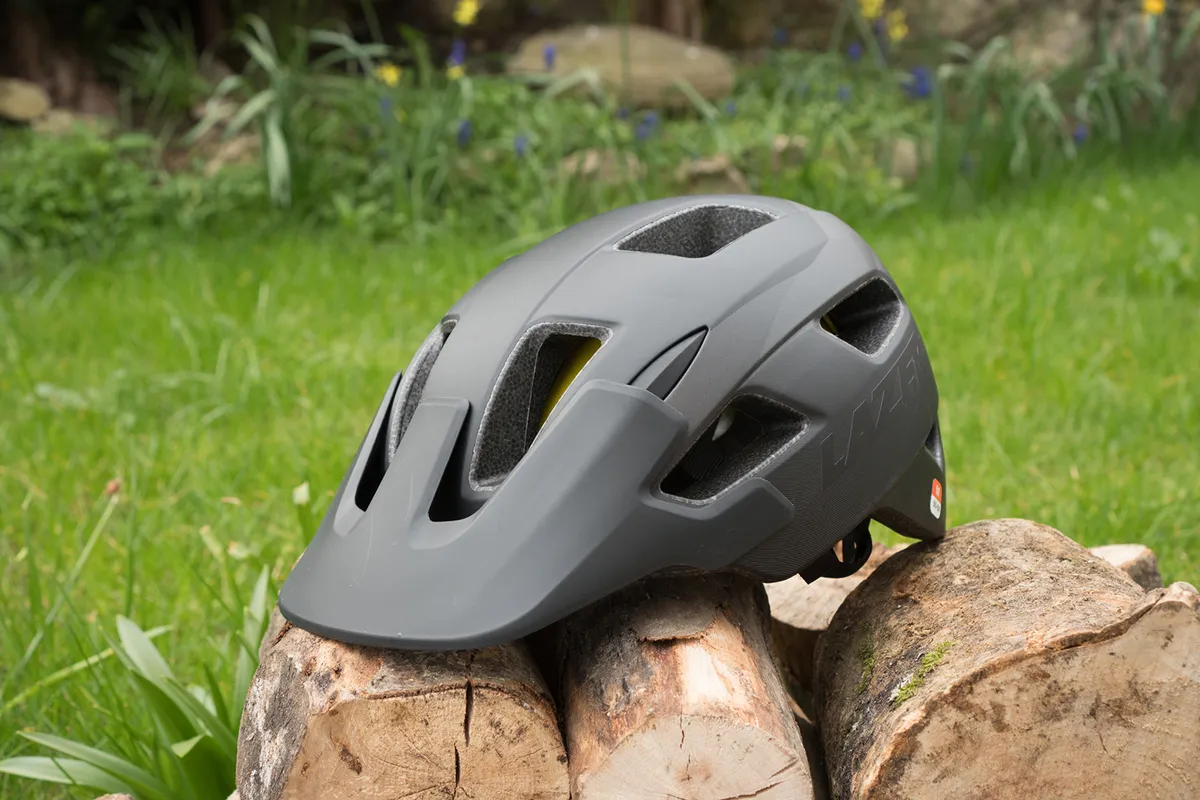
- £60 / $60 / AU$120 as tested
- Pros: Comfortable, neutral fit
- Cons: Some glasses won’t fit on the helmet
The Lazer Chiru MIPS helmet has an exceptionally comfortable, neutral fit and doesn’t bounce around when you’re wearing it over rough terrain. The retention system provides incremental adjustment.
It’s a very safe helmet thanks to its MIPS protection.
The helmet is fairly hot, although not unbearably so, and some larger-framed glasses may not be compatible. But despite these niggles, there is much to like about the Chiru.
Pinnacle MTB Helmet
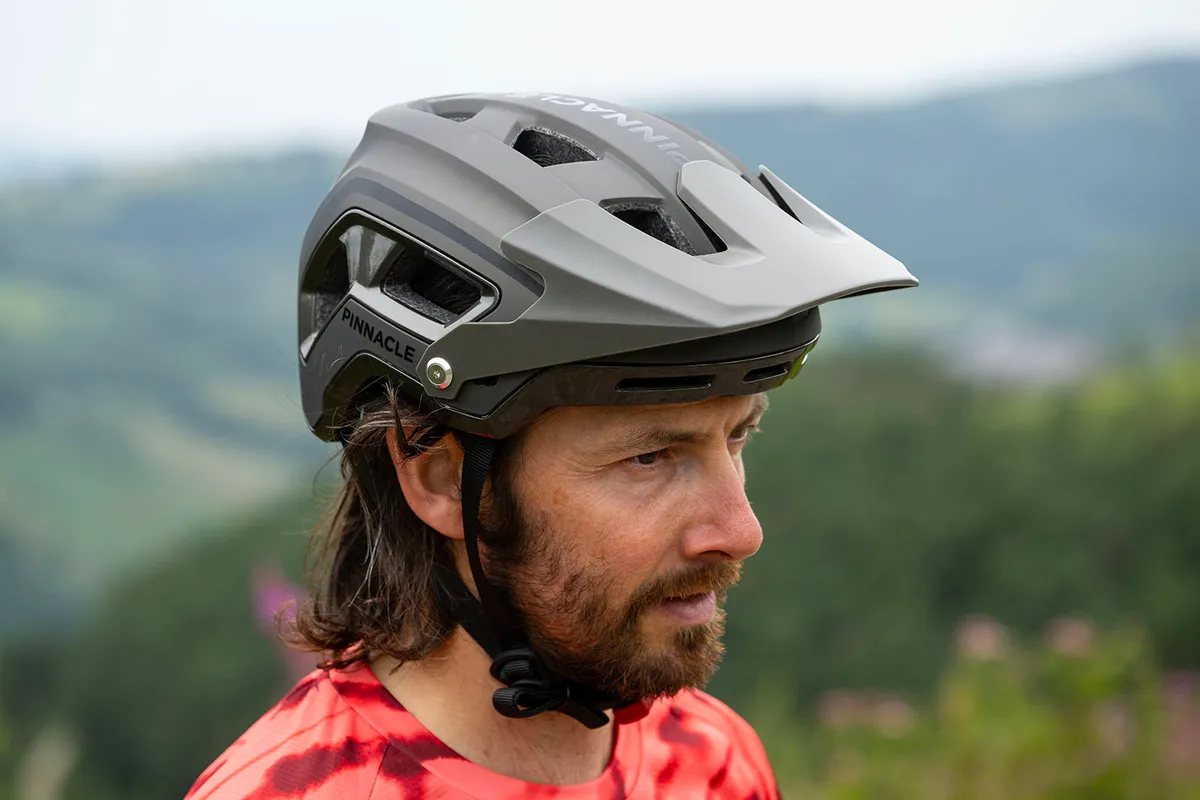
- £70 as tested
- Pros: Modern styling; comfortable fit; plenty of adjustment
- Cons: Could be more breathable
The Pinnacle MTB Helmet features a dropped rear portion that protects the back of your head and works well for trail riding.
We found the ventilation to be a little weak for full-blown cross-country outings, with the 22 vents too small to allow hot air out in summer months.
The helmet works well with most glasses, bar some more modern super-wide frames, which cause some interference.
Despite the budget price, the Pinnacle MTB helmet is well-built and good quality.
Smith Session MIPS helmet
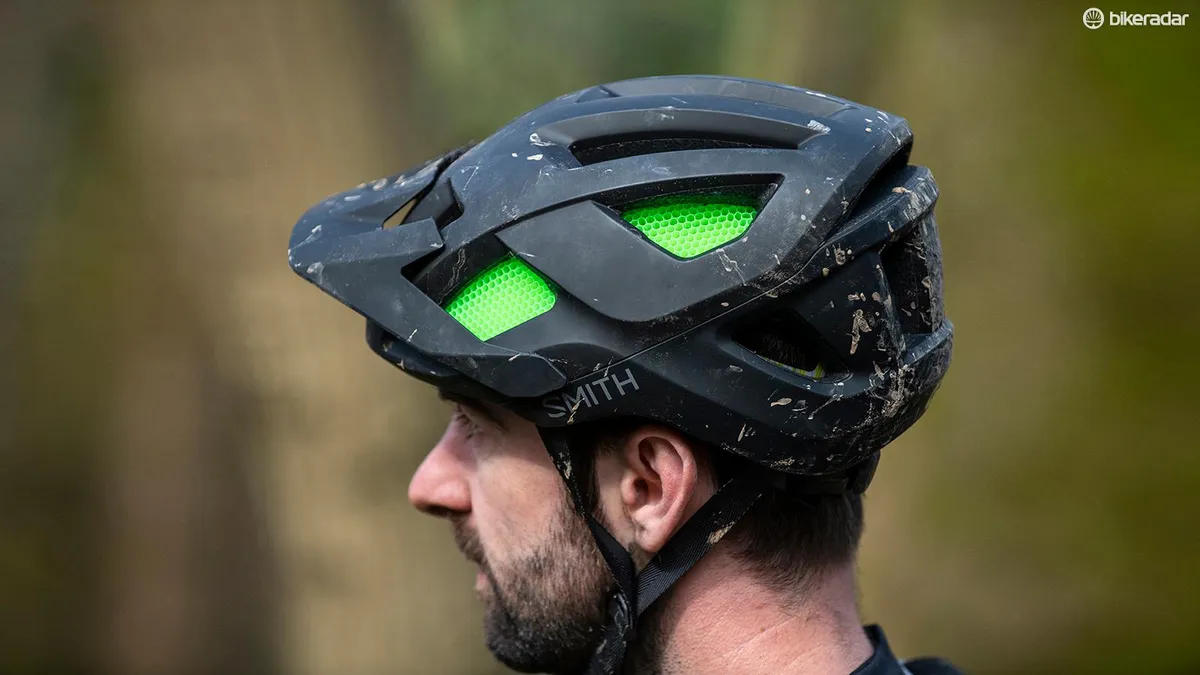
- £140 / $160 / €160 as tested
- Pros: Great cooling and good comfort; MIPS liner
- Cons: Fairly pricey
The Smith Session MIPS helmet uses a combination of two third-party protection technologies for safety: MIPS to reduce rotation impact and Koroyd, which crumples to absorb the forces caused by impact.
These features don't get in the way of ventilation, and the helmet provides great cooling. The downside is that the large vents did make it easy for bugs to fly in while testing.
The retention system is easy to adjust, vertically and with the index wheel, and the helmet didn't move around too much even with goggles stowed on top.
The Smith Session MIPS helmet has a host of features and, although it's fairly pricey, it does offer good value for money.
Troy Lee Designs A3
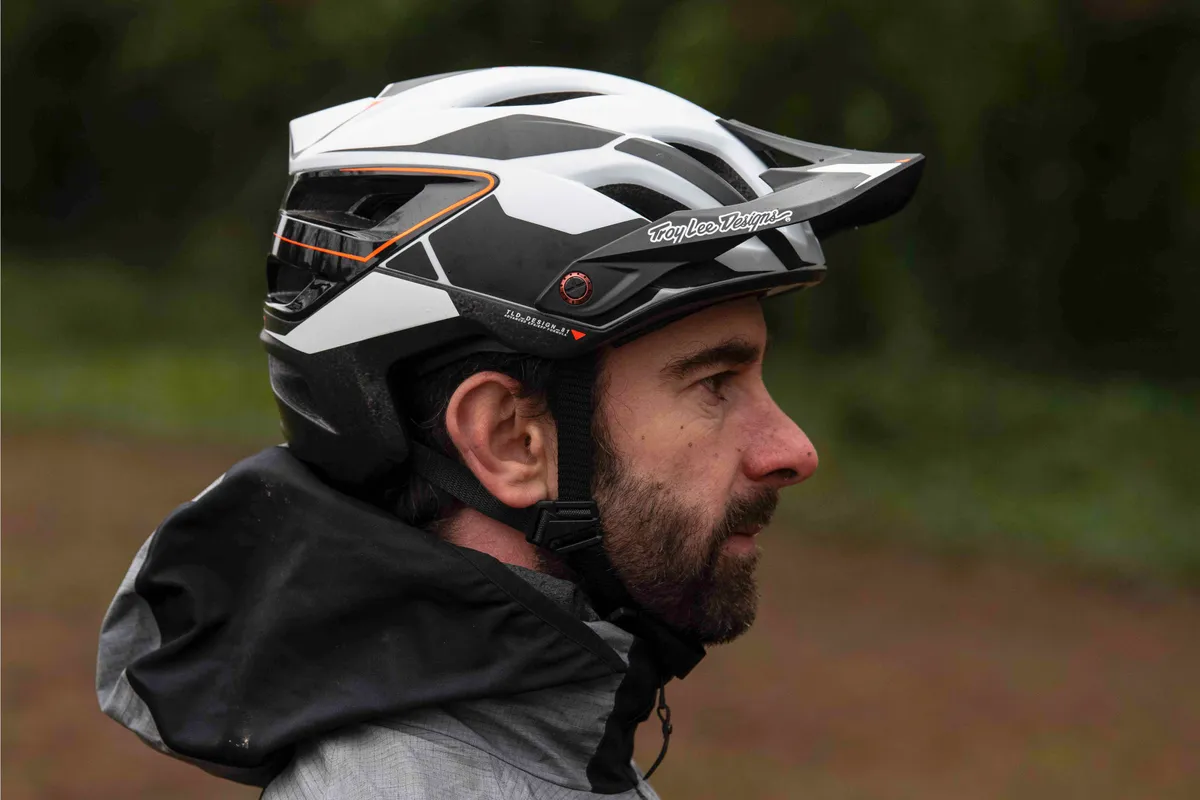
- £200 / $220 as tested
- Pros: Great fit and superb comfort; MIPS liner
- Cons: High price
The Troy Lee Designs A3 is TLD's premium trail helmet and builds on the success of the A1 and A2, which both set a benchmark when it came to mountain bike helmet design.
The A3 is an iconic TLD shape, and TLD hasn't scrimped on safety either. The helmet uses two layers of foam to protect you against different impact speeds and employs a MIPS liner too. It was given a five-star rating by the Virginia Tech Helmet Ratings project.
Wearing the A3 out on the trail, there is a decent breeze over your head and the magnetic visor doesn't rattle around as on some other helmets. It's a bit heavier than some, but it is extremely comfortable, and we'd argue it's worth the price tag.
Troy Lee Designs Flowline MIPS helmet
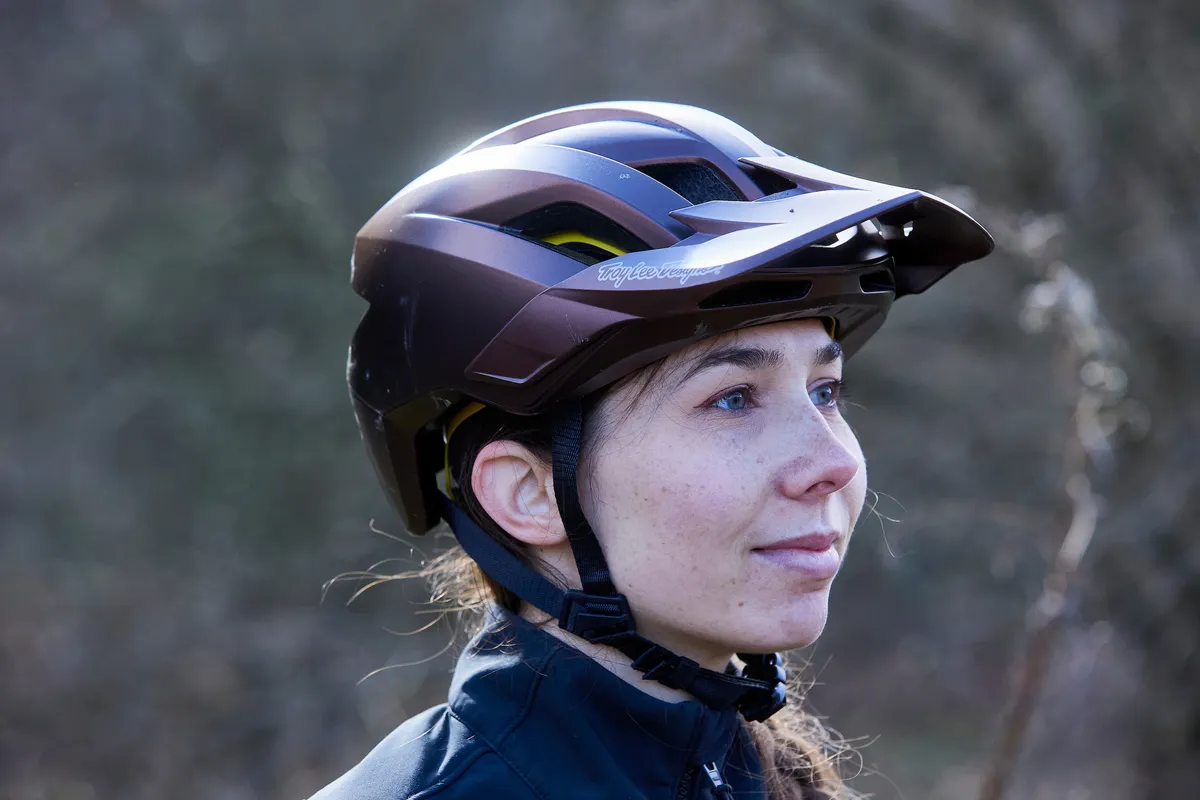
- £100 as tested
- Pros: Impressive comfort and fit; sleek style at a great price
- Cons: MIPS liner can be a bit noisy
A sharp and sleek design makes this helmet a lot less bulky than others, and the well-placed padding ensures the Flowline is comfortable on long rides.
The ventilation works well, with our tester finding the removable pads worked well in soaking up sweat.
The Flowline is compatible with many riding glasses, with the helmet's straps sitting comfortably over their arms and space under the peak to store them.
Bell Super Air Spherical
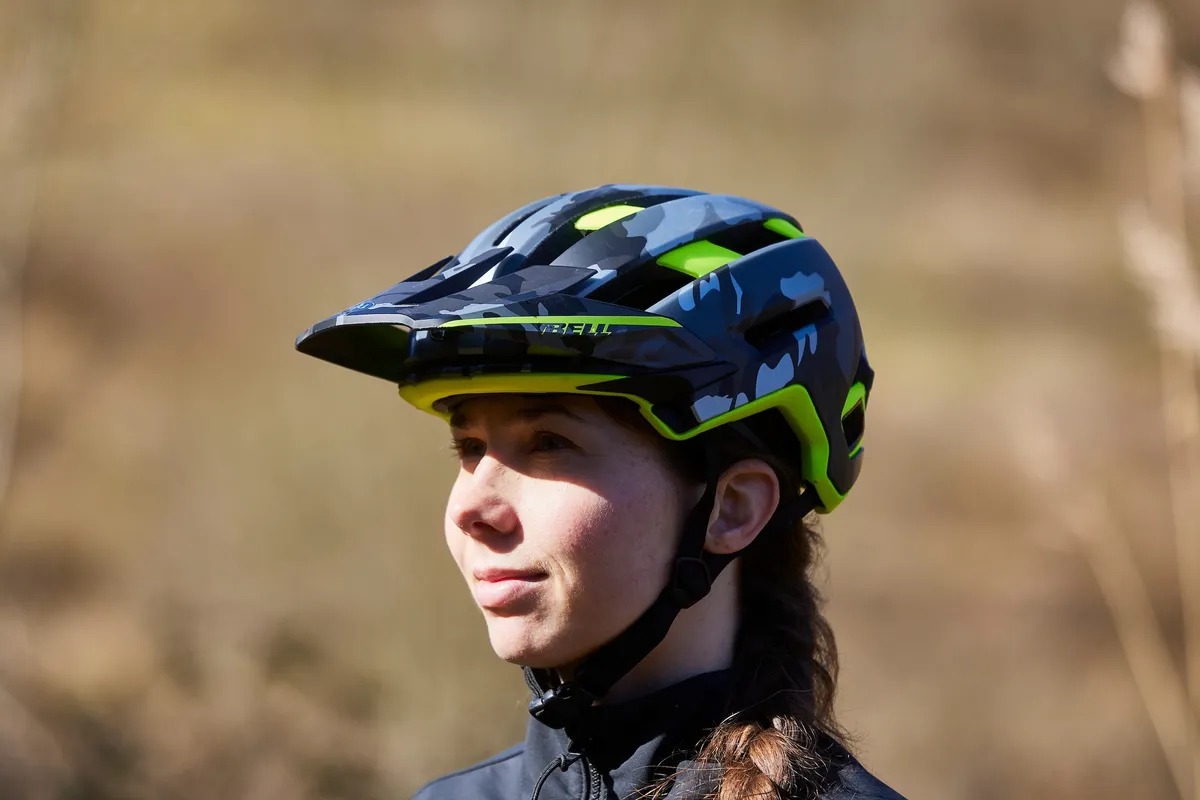
- £224.95 as tested
- Pros: Top-tier comfort levels; premium build quality
- Cons: Peak needs some refinement
The Bell Super Air Spherical uses two layers of EPS foam for impact protection, with the outer layer being denser to take the sting out of high-speed impacts.
Our tester found the Ionic padding and 360-degree retention system kept the helmet comfy on long days out.
With 17 vents, the helmet also works well at cooling your head – though not all vents penetrate through the inner EPS layer.
The helmet can be converted into a lightweight full-face helmet with the purchase of an £89.99 chin bar.
B'Twin All Mountain
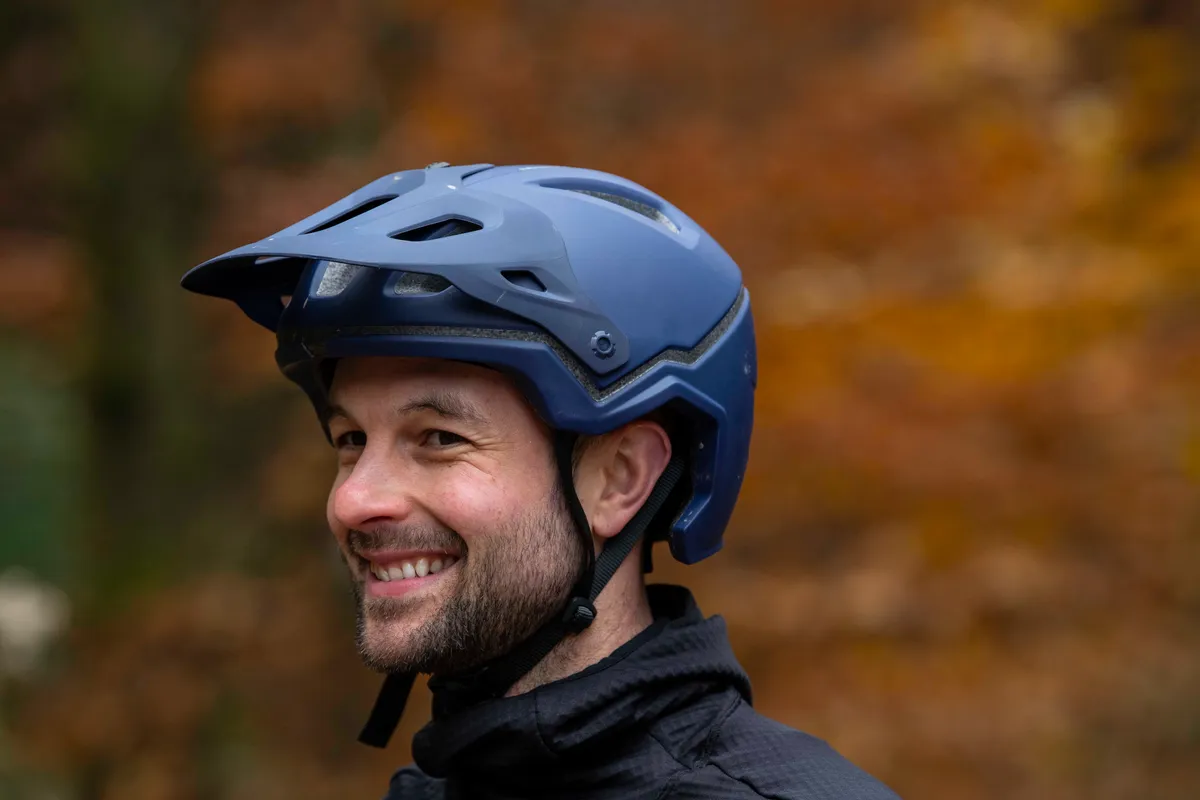
- £29.99 / €40 as tested
- Pros: Good on-head stability and comfortable; bargain price and good head coverage
- Cons: Can get quite hot on long climbs
For the price, the B'Twin All Mountain is an impressive lid, offering plenty of coverage, staying comfortable on long rides and refusing to budge over rough terrain.
It's compatible with plenty of riding glasses, but lacks an adjustable retention cradle as seen on most other lids. As long as you buy the right-sized helmet for your head, this shouldn't be a problem though.
Although we didn't mind its looks, they might not be to everyone's tastes.
Endura SingleTrack II helmet

- £74.99
- Pros: Excellent value; four peak positions
- Cons: No MIPS liner
The Endura SingleTrack II is the lightest and the cheapest helmet in the list, scoring a creditable four stars.
The huge front and side vents bring welcome ventilation. The highest of the peak levels can hold googles and dropping it down keeps out low winter sun.
Endura will replace the helmet if you crash within three years of purchase, for 50 per cent off the RRP.
Fox Dropframe
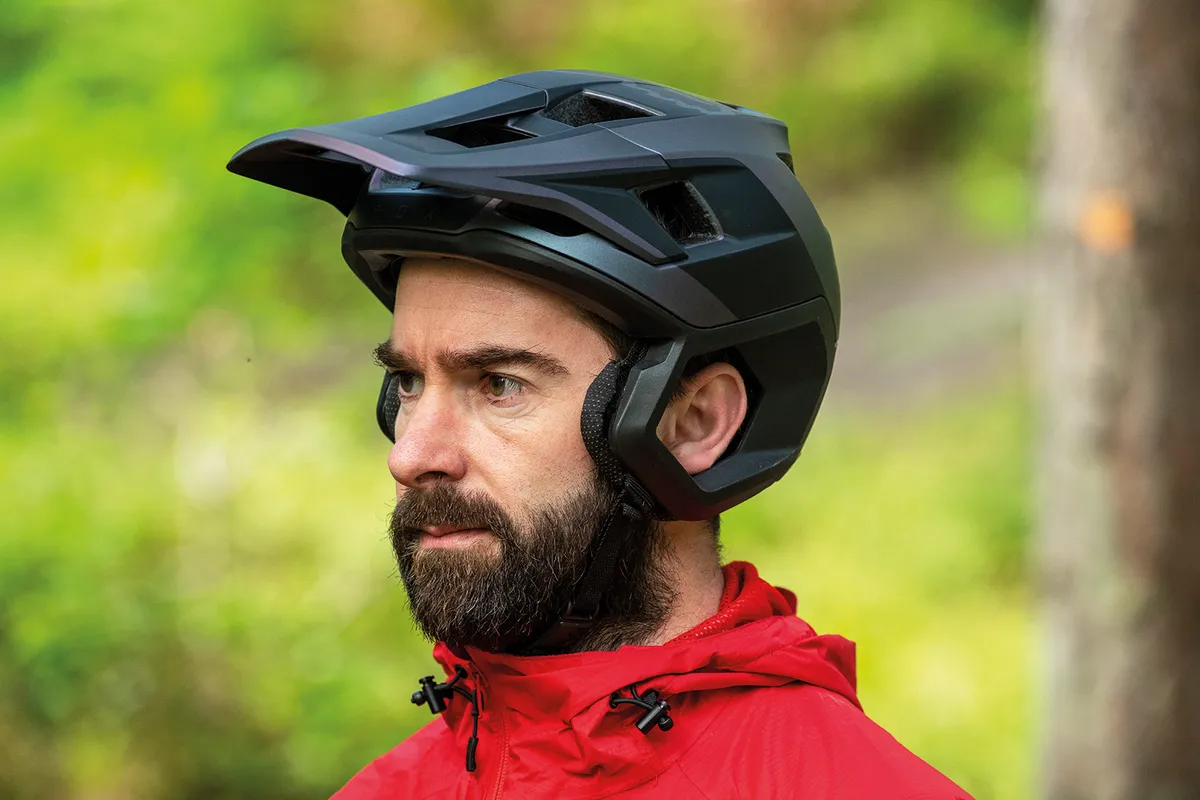
- £130 / $170 as tested
- Pros: Great, full-head coverage; good venting; reasonable weight
- Cons: Fixed peak and no adjustment cradle
Like the Giro Tyrant, the Fox Dropframe is another example of the new-school open-face, extra-coverage trail lids that look similar to full-face helmets with the chin bar removed.
Lids that look like this tend to divide opinion, but there's no denying the extra protection is attractive.
The Dropframe doesn't have MIPS, but does feature a dual-density EPS shell. And because it doesn't have an adjustable retention cradle, its fit can only be adjusted by changing the pads, so trying before you buy is essential.
Giant Rail Helmet

- £150 / $190 / €150 as tested
- Pros: Slick design; good ventilation; high levels of adjustability
- Cons: Round shape may cause pressure points; slim lining doesn't offer much cushioning.
Giant's Rail Helmet delivers plenty of safety tech, with the MIPS protective liner, and great breathability thanks to the large and plentiful vents.
The three-position adjuster makes finding the right fit easy, though our tester found the rounded shape caused some discomfort on longer riders.
The Rail's glasses compatibility is well-designed, and they can be stored under the visor when not in use.
Giro Fixture MIPS
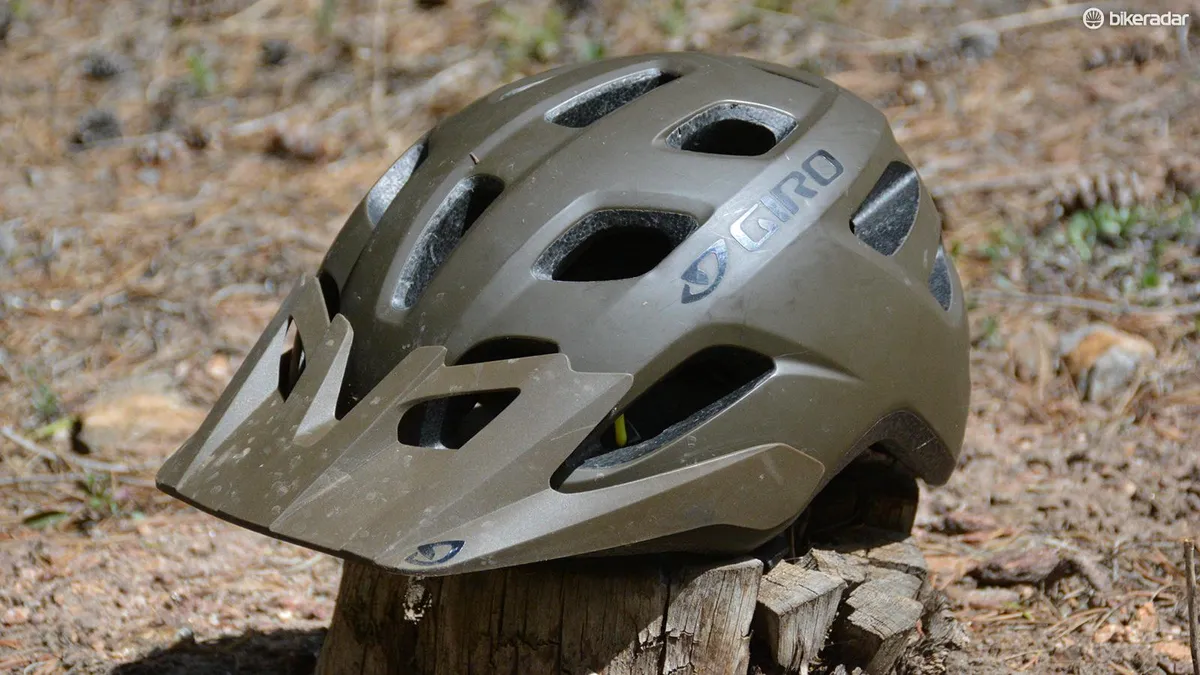
- £69.99 / AU$119 as tested
- Pros: MIPS protection; good looks; well-vented; stays put over rough terrain
- Cons: Fixed visor can be a pain
The Fixture is a bit of a bargain, considering the amount of tech on offer. It's got MIPS and an adjustable fit system with a one-size-fits-all design that spans between 54 and 61cm.
Although the visor is fixed and the interior padding isn't as plush as some lids, for the price the Fixture is a great performer.
Oakley DRT5
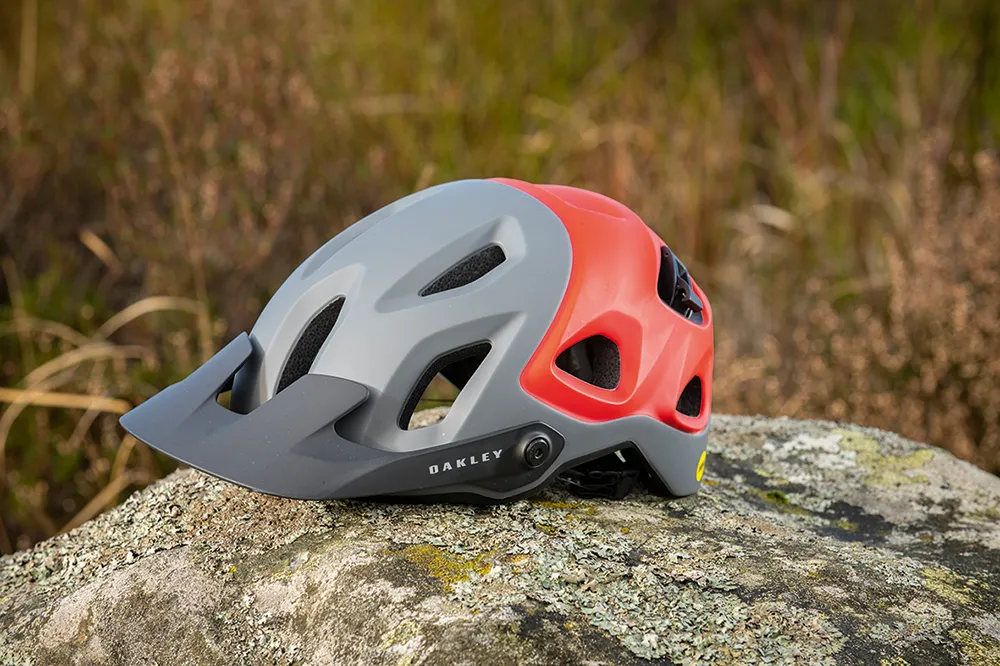
- £170 / $200 / €200 / AU$265
- Pros: Comfort; good ventilation
- Cons: High weight and price
The Oakley DRT5 may look plain, with a sole pad to cushion the back of your head and only a silicone seal for your forehead.
However, it's extremely comfy and the absence of bulky padding reduces risk of overheating. Should you warm up, the seal also prevents sweat dripping down your face.
This performance comes with a weight and price penalty, but Oakley does offer 50 per cent off replacements within three years of the original purchase.
POC Kortal Race MIPS

- £220 / $250 / €250 / AU$400 as tested
- Pros: Plenty of coverage and decent venting
- Cons: Pricey
The POC Kortal Race MIPS is a pricey helmet, but POC has managed to pack in lots of features and safety tech, which makes it an attractive package.
The helmet features MIPS technology and has plenty of coverage to keep your head protected. There is also a chip in the helmet, which can store all your medical information if the worst does happen.
The retention system wraps around the whole head, which minimises the chance of any hot spots, and overall we found the Kortal Race comfortable to wear.
The venting in the helmet does a good job of circulating air around your head on warm days.
POC Tectal Race SPIN NFC
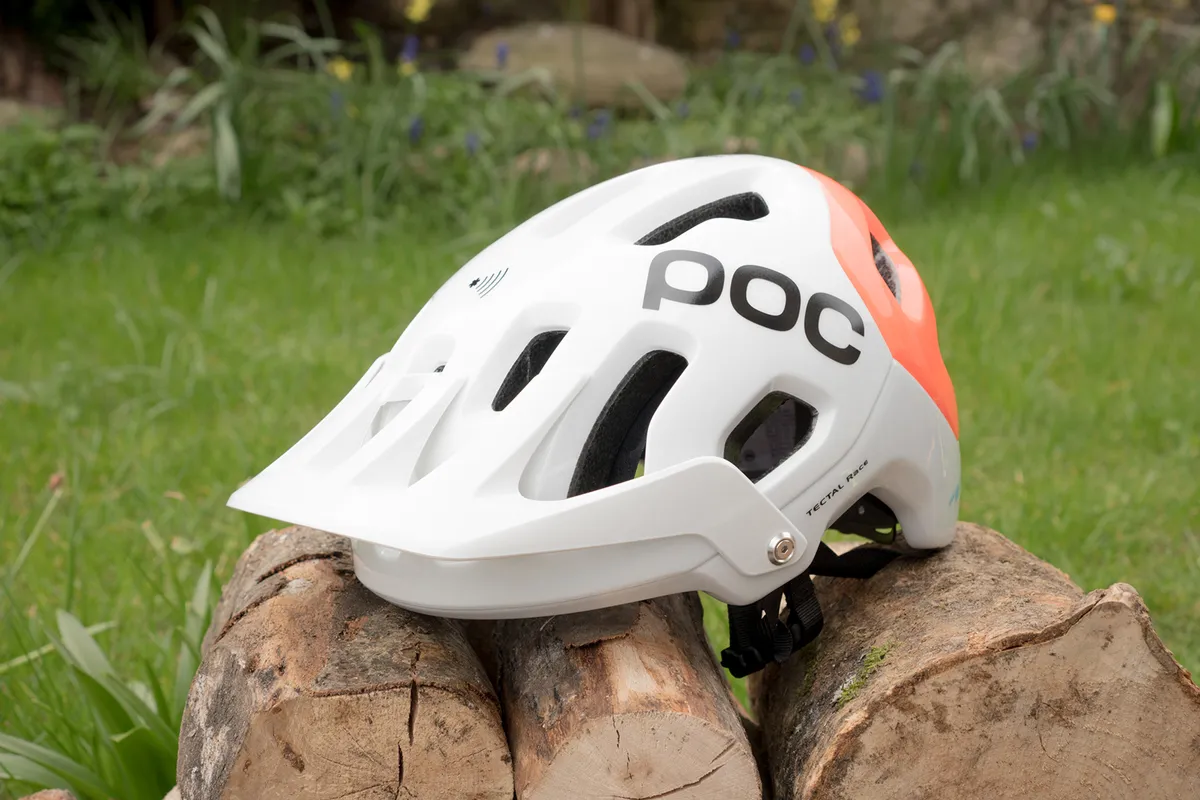
- £220 / $250 / €250 as tested
- Pros: Comfortable; deep coverage
- Cons: Could do with better cooling
The Tectal Race SPIN NFC is an older helmet from POC, but it still packs plenty of attractive features and has a 5-star rating for safety from Virginia Tech.
The helmet uses SPIN technology, which is a proprietary safety technology that POC used for a number of years. The brand is now transitioning to using MIPS in its helmets.
Elsewhere, the helmet has an NFC chip that can store your medical information, and we found this easy to set up.
The helmet is comfortable to wear, but we would like to see it have a few more vents for better air circulation.
Sweet Protection Trailblazer MIPS

- £160 / $180 / €180 as tested
- Pros: Comfortable and easy to adjust; MIPS protection
- Cons: Not the best ventilation
The Sweet Protection Trailblazer has a multi-piece shell with different thicknesses and shapes to best protect your head. It also uses MIPS technology to minimise rotational force causing damage on impact.
When it comes to fit, the Trailblazer has an index dial that is easy to adjust. It comes with two thicknesses of pads, which unlike other helmets you can distinctly feel. The helmet feels secure when going over bumps.
This helmet has 16 vents, but we found ventilation to be fairly average, making this a cool-weather helmet. We also found it difficult to use this helmet with large goggles. This means it's not the most versatile, which might put you off paying the full £160 price.
Mountain bike helmet buying advice
The best mountain bike trail helmets manage to balance the often-competing needs of protection, ventilation, comfort and weight.
Protection
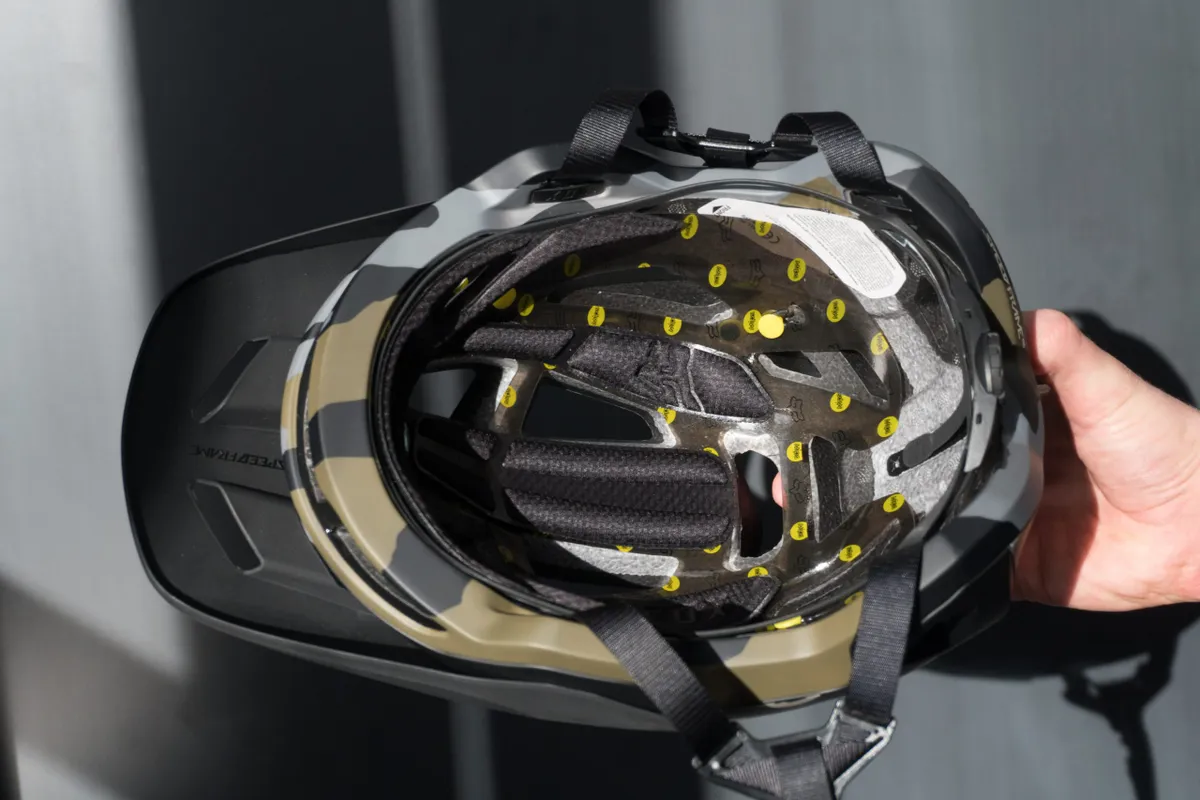
Helped by the rise in popularity of enduro racing, many open-face lids now offer greater coverage around the back of the head and the temples than cross-country or road-style helmets, helping to boost protection.
Unless you care about every single gram or really want ultimate cooling, that makes them a sensible bet for the majority of riders.
Most bike helmets use some form of expanded polystyrene, or EPS foam, formed around a core of another, tougher material to provide cushioning in the event of an impact.
The foam crushes when it’s struck, spreading and delaying the force of the impact being transmitted to the wearer, hopefully to a level that will prevent injury.
While the impact resistance of helmets is covered by a number of test standards to ensure they perform when they’re needed, manufacturers have been introducing extra technology to try to improve on this.
One such technology is MIPS (multi-directional impact protection system), which uses a floating plastic liner between the head and the EPS structure, which reduces the amount of rotational force transmitted to the brain during a crash.
Rotational force is responsible for a large number of injuries, including brain damage, so while it makes manufacturing, and thus retail, prices more expensive, many manufacturers now incorporate MIPS into their helmets.
Most bicycle helmets now have a hard plastic outer moulded to the EPS structure. This is known as in-moulding and provides protection against minor bumps and scratches that would otherwise damage the EPS.
On cheaper helmets, this tends to be limited to the top and sides of the helmet. More expensive, fully in-moulded helmets extend the plastic protection down and around the rim, making it much more effective at fending off damage.
Ventilation
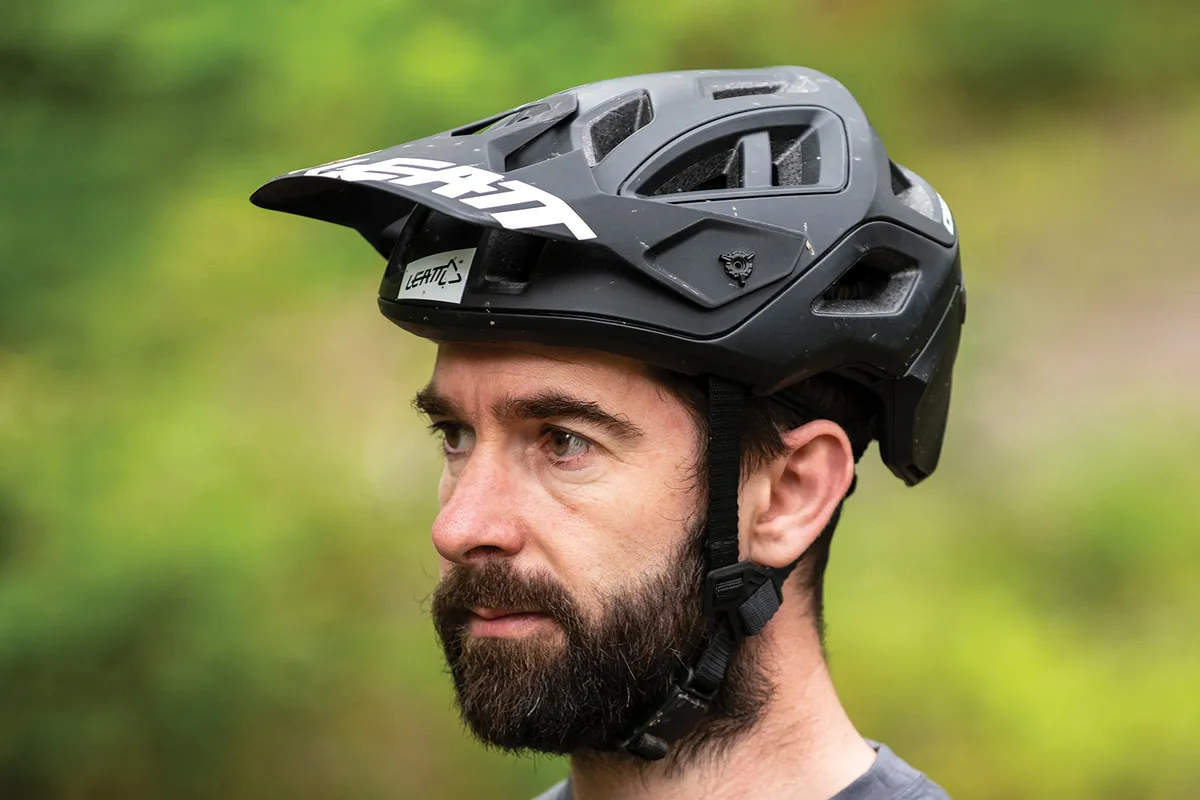
While the extra coverage of trail-style helmets is more than welcome, it does get in the way of airflow, which can mean a much warmer and sweatier head in hot weather or when you’re pushing really hard.
Happily, thanks to the increasingly clever use of materials and design, it’s now possible to make a lid that’s almost as cool as a conventional design.
Having lots of vents is important, but it’s the internal channels that help airflow in through the front, over the head and out the back that makes all the difference.
Look for big vents on the front and rear, with deep channels on the inside of the lid.
Comfort
How well a helmet fits will depend on the size and shape of your head. Many people tend to get on with certain brands that use a particular shape, but finding the right one is very much a case of trial and error.
If possible, go to your local bike shop to see how you get on with different lids or ask your friends if you can try theirs.
The main thing is to ensure you can get the helmet sitting securely on your head so there are no pressure points or undue movement.
Most helmets will have a retention system of some kind to allow you to adjust how tightly it fits onto your head. Many of these will tighten and loosen around the circumference of the head, although some also adjust in other ways.
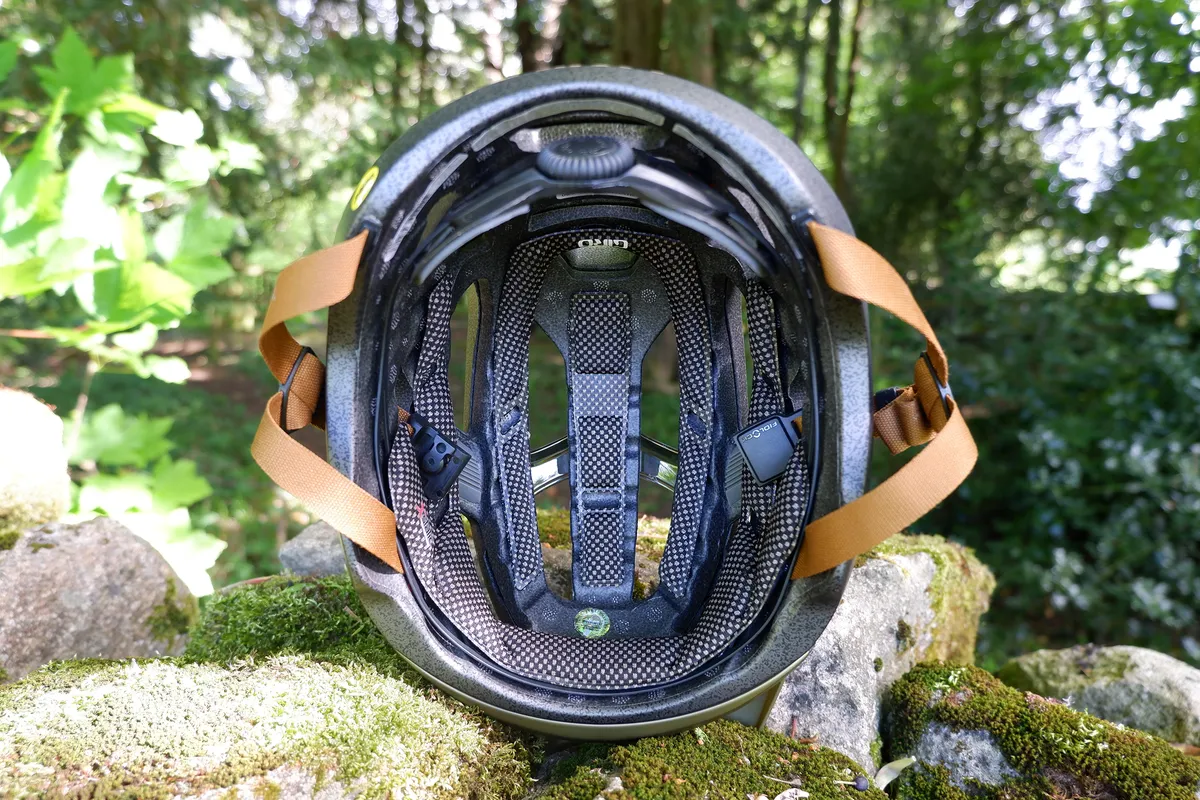
However it works, make sure you can operate the system easily in gloves and that it doesn’t trap hair or pinch flesh.
Also ensure that you can adjust the straps to get a solid fit that’s not restrictive and that when fully adjusted you have a clear, unobstructed view, especially when you’re in an aggressive, head-down riding position.
Check that the peak can be adjusted so that it keeps the sun out of your eyes without getting in the way or flapping about when you ride. If you like to ride wearing sunglasses for mountain biking, make sure they fit comfortably with the lid.
Weight
While weight might seem like a minor consideration compared with a helmet's other characteristics, a lightweight helmet will be a much more pleasant place to be after a long day on the bike.
A light lid is much less likely to move about as you ride, too.
Convertibility
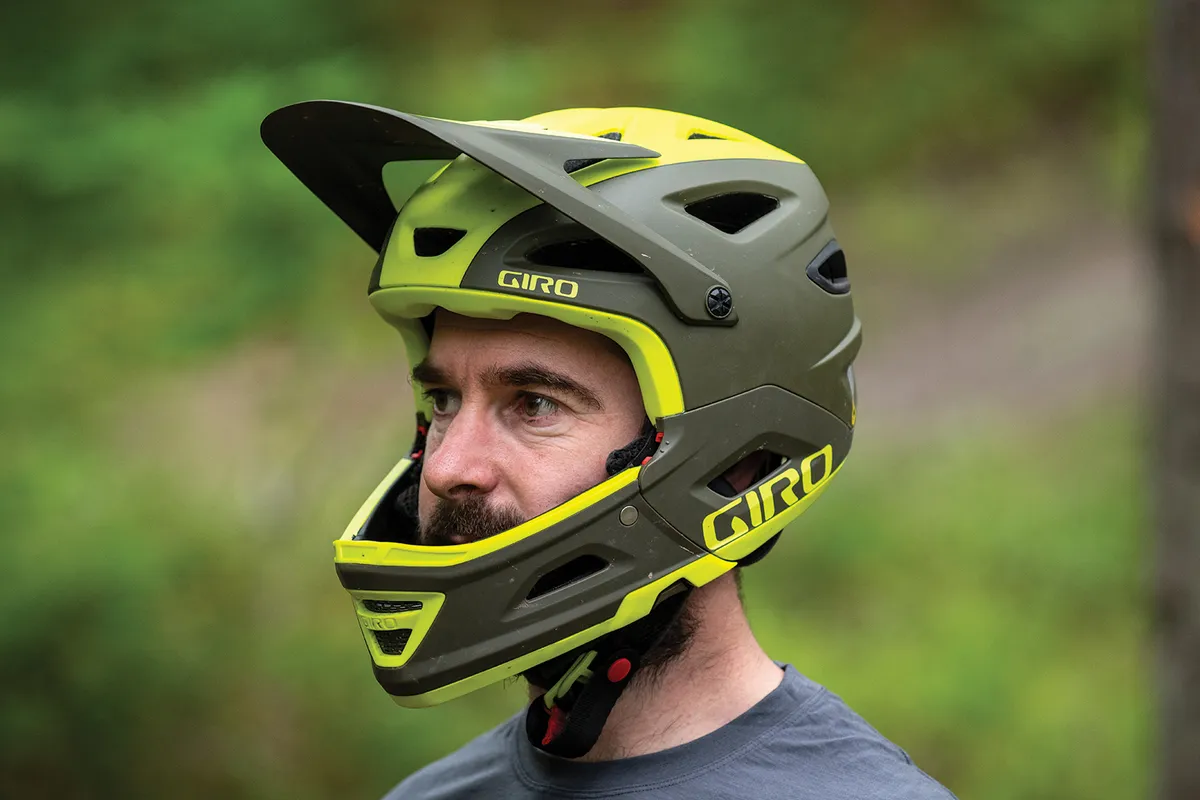
A number of helmets on the market now come with a chin guard that can be removed. This is largely in response to the growth in enduro racing, where long climbs benefit from an open-face lid to help you breathe and stay cool, while gnarly descents mean the additional protection from a full-face-style lid is desirable.
With a removable chin guard, riders get the best of both worlds.
The compromise is often weight because, if the helmet has full ASTM downhill certification (so it can be used as a DH race helmet), there needs to be extra protection built in. Not all of the convertible helmets meet this standard, though.
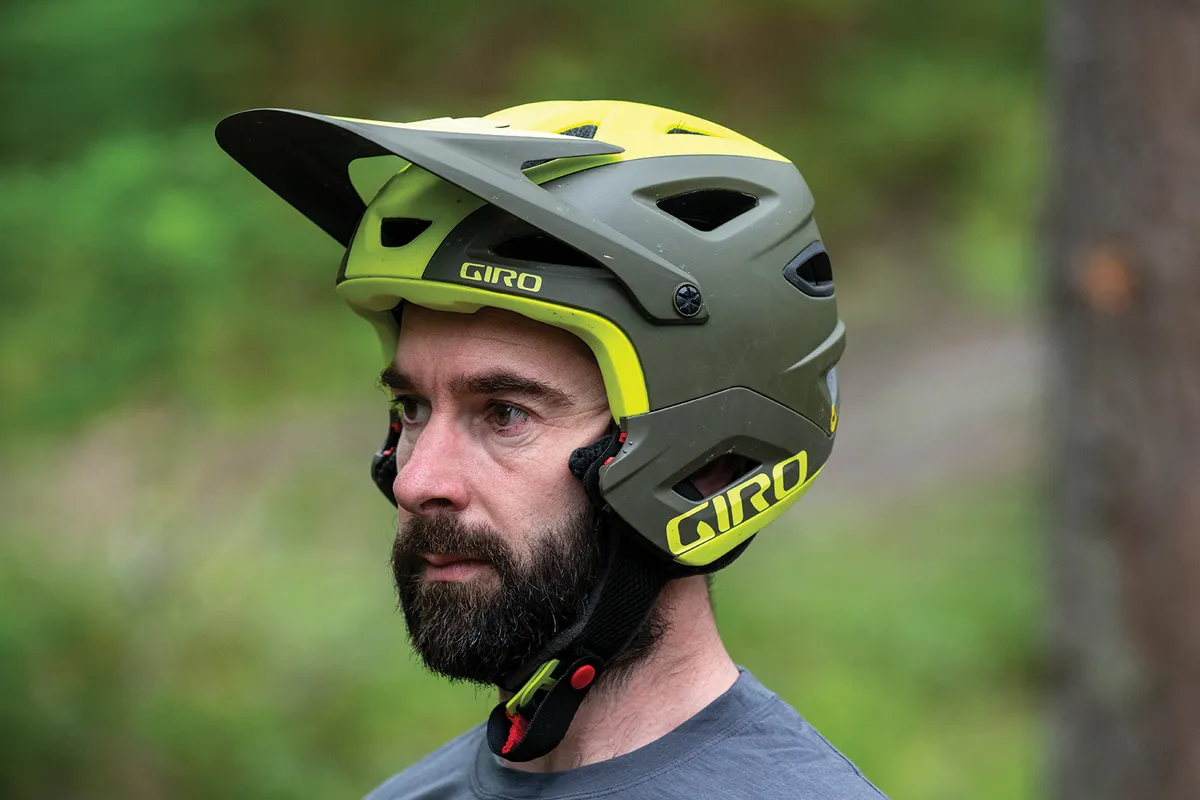
Whether you choose a convertible helmet is up to you, but we're definitely seeing more on the trails these days.
Anything else I might need to know?
If you love to record and share your rides online, then you’ll be pleased to know that more and more manufacturers are integrating removable camera mounts into their helmets.
These allow a secure fitting for your camera, but also mean you can go back to having an unfettered helmet when you want to.
Many enduro-style lids also allow you to use mountain bike goggles to provide almost impregnable eye protection. Look for helmets with a peak that lifts up high enough for you to be able to fit the goggles underneath and a strap of some kind at the back to keep them secure
